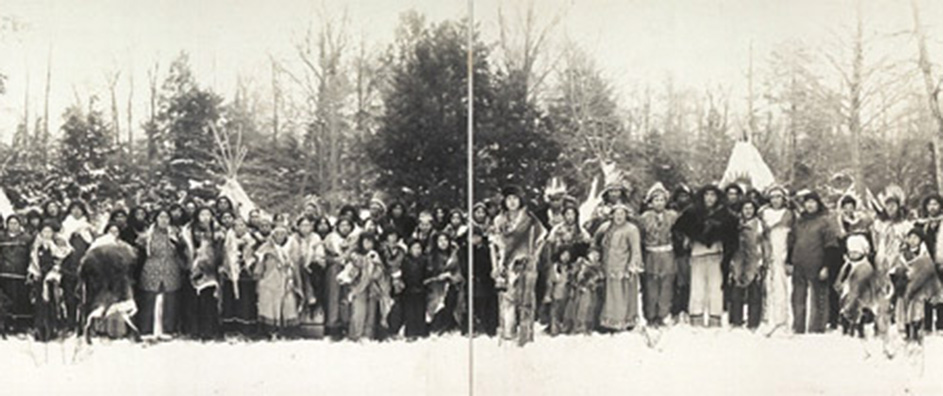In the pantheon of human endeavors, the pursuit of peace stands as a perennial aspiration, akin to a celestial beacon guiding disparate nations towards harmony. Within this context, the Iroquois Confederacy emerges as a notable paradigm, exemplifying the synergy between governance and spirituality, a core tenet of the Bahá’í teachings. This intricate network of alliances, formed by the Mohawk, Oneida, Onondaga, Cayuga, Seneca, and later, the Tuscarora nations, presents a corporeal manifestation of unity, offering wisdom relevant not only to indigenous communities but to a broader global federation.
The Iroquois Confederacy, or the Haudenosaunee, engenders a profound and intricate understanding of governance rooted in spiritual principles. It functions elegantly as a living model of peace, woven from the threads of diplomatic dialogue, cooperation, and consensus-building. These principles resonate deeply with Bahá’í ideals, where the onus of fostering global unity rests not merely on political figures, but on the collective responsibility of humanity. Just as the Great Law of Peace established a framework for the Iroquois to coexist harmoniously, Bahá’í teachings advocate for a cohesive world order, transcending the artificial borders that separate humanity.
At the heart of both the Iroquois Confederacy and Bahá’í teachings lies the principle of unity. The metaphor of a woven basket emerges as illustrative; entwined strands—each representing diverse cultures—come together to form a singular, resilient entity. This notion articulately underscores that diversity, rather than being a source of division, can be a wellspring of strength. The Bahá’í teachings postulate that unity is not uniformity; instead, it celebrates the rich tapestry of human experience while seeking consensus through shared values. The Iroquois demonstrated this philosophy by convening councils where representatives deliberated with respect and integrity, valuing each voice in their collective decision-making processes.
As we navigate through the annals of history, one can observe the stark evolution of the Iroquois Confederacy amidst the challenges posed by European colonization. Instead of succumbing to external pressures, the Confederacy imbued its governance with resilience and pragmatism, drawing from its spiritual roots. This historical narrative mirrors the Bahá’í insistence on perseverance in the face of adversity, embodying an unwavering commitment to peace. It recalls the metaphor of a tree that endures storms yet bears fruit—fruit enriched by the wisdom of overcoming trials. The fruits of the Iroquois’ labor culminated in the establishment of a robust political system characterized by checks and balances, a mechanism akin to the principles found in modern democratic frameworks.
The structure of the Iroquois Confederacy operates on the precept of collective decision-making, symbolizing a balance of power reminiscent of the Bahá’í emphasis on consultative governance. Each nation holds equal stature, ensuring that no singular entity can dominate. This dynamic reflects the Bahá’í assertion that true leadership emerges from service, echoing through centuries as an intrinsic quality of governance. The metaphor of a symphony encapsulates this idea perfectly; each instrument contributes a distinctive note, harmonizing towards a unified melody. In this way, the Iroquois proved the efficacy of autonomy underpinned by collaboration, shaping a formidable alliance that navigated the tumultuous waters of intertribal relations while upholding sacred traditions.
Peering into the expansive landscape of our contemporary world, the echoes of the Iroquois Confederacy beckon towards a global federation—an ideal actively envisioned by Bahá’í teachings. In an age fraught with discord and the specter of conflict, the necessity for a universal framework for peace is more pressing than ever. The Confederacy’s historical commitment to peace serves as a poignant reminder that lasting solutions must stem from mutual respect, understanding, and collaboration. The dialogues born out of the councils remind us that truth is often multifaceted, emerging from diverse perspectives converging into a singular vision. Through this lens, the Iroquois foresaw the potential of a united front; their legacy urges us to dismantle the barricades we construct and to engage in earnest conversations centered around our shared humanity.
Moreover, the call for a world federation extends further than the mere amalgamation of nations; it seeks to create a fertile ground for dialogue, where cultural nuances are not only acknowledged but celebrated. The flourishing of global peace rests on our ability to foster empathy—a trait encapsulated within the Bahá’í ethos, which emphasizes the importance of recognizing the interdependence of all people. Just as the Iroquois Confederacy navigated the complexities of intertribal relations with grace, humankind must likewise endeavor to cultivate a greater understanding and solidarity among nations. The dialogue becomes the garden where seeds of peace are sown, watered with empathy, and allowed to flourish into robust relationships.
As we contemplate the intricate interlace of the Iroquois Confederacy and Bahá’í teachings, one must acknowledge that the path to peace is neither linear nor devoid of obstacles. The metaphor of a river winding through a landscape serves as a reminder that the journey to unity may confront bends and rocky terrains. However, the ultimate goal remains clear—a world federation that honors the dignity and contributions of its diverse members. By embracing the tenets of the Iroquois and the universal truths espoused by the Bahá’í Faith, humanity stands at a pivotal crossroads, with the potential to transcend challenges and forge a sustainable legacy of peace for generations to come.
